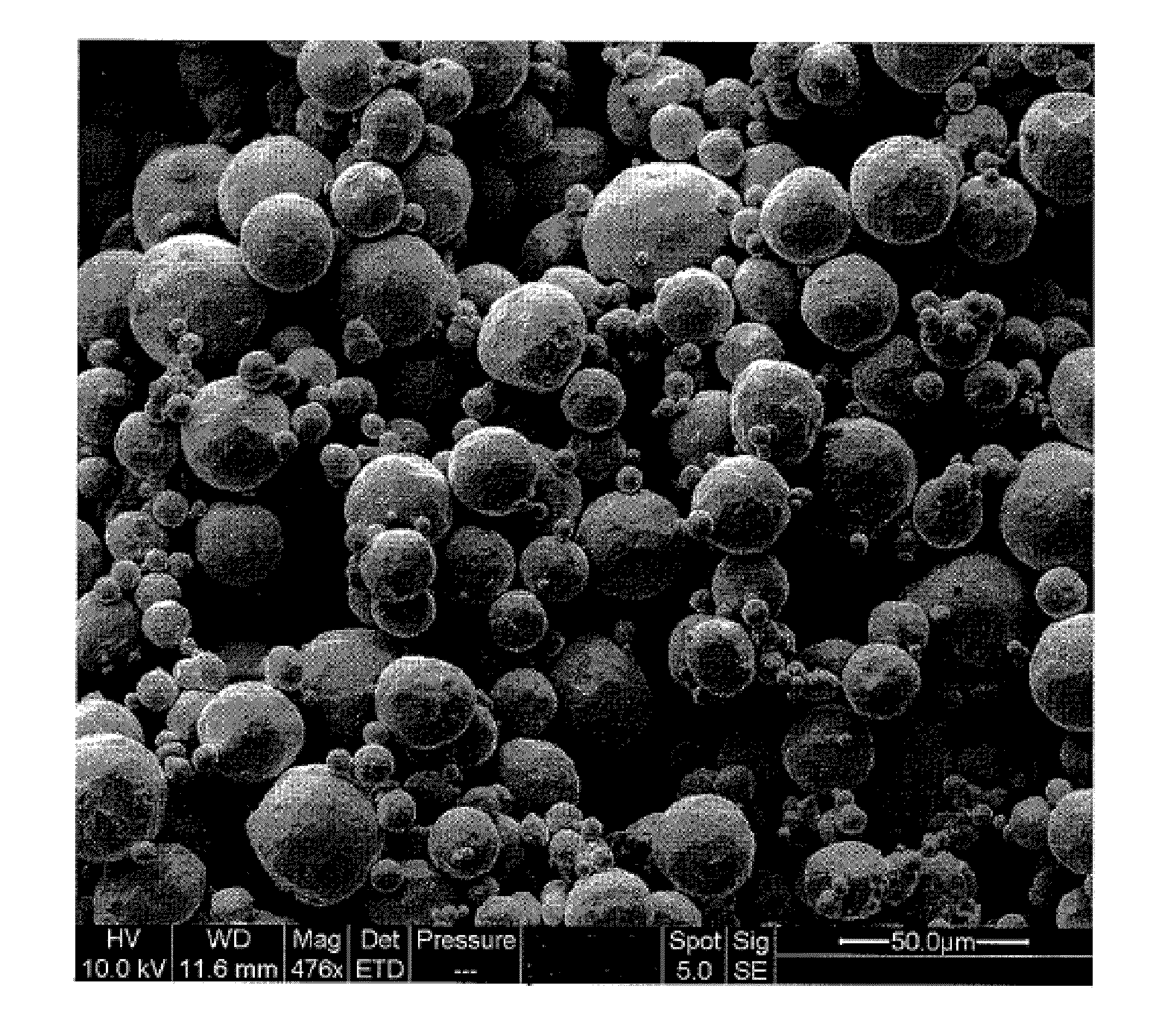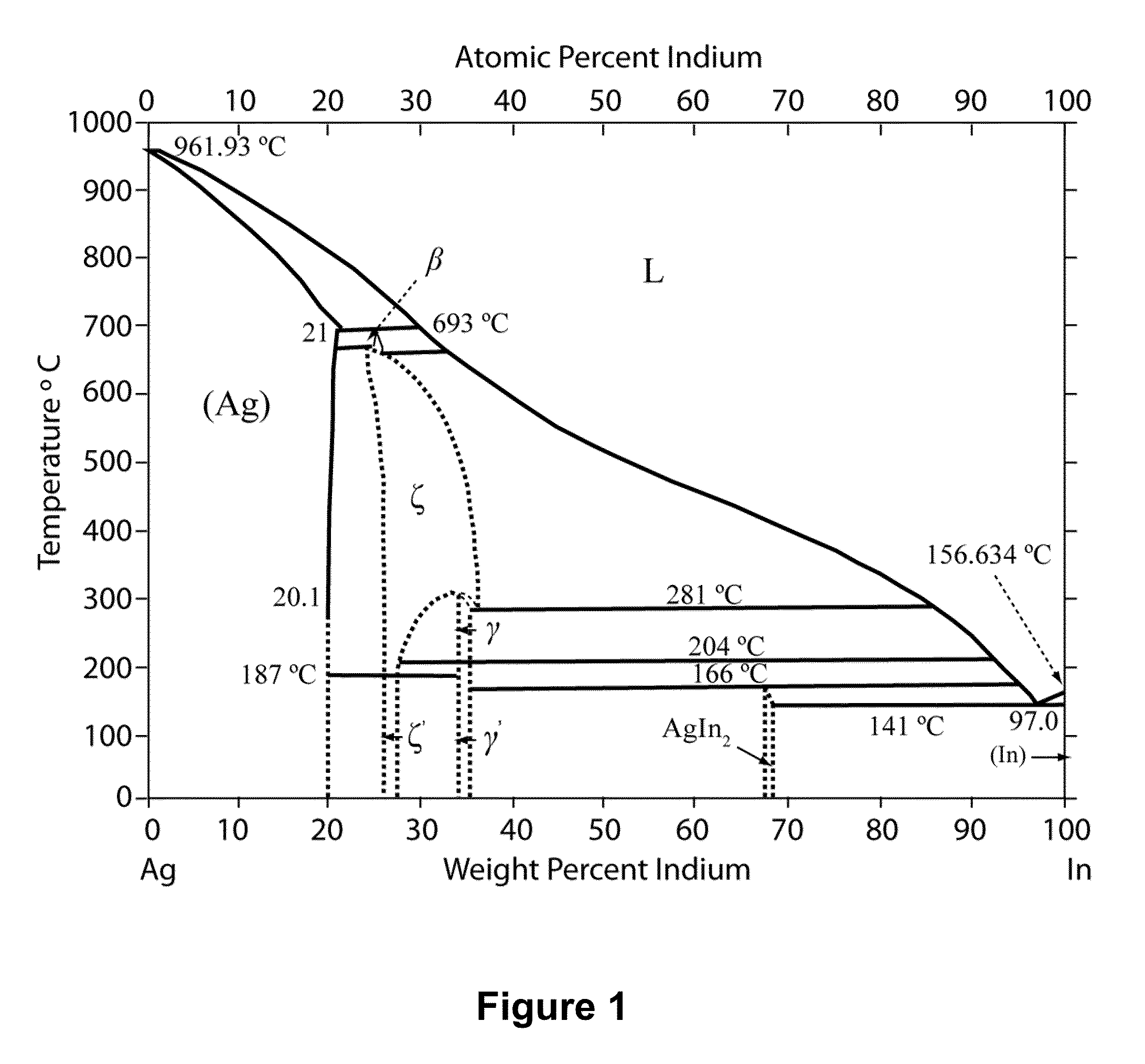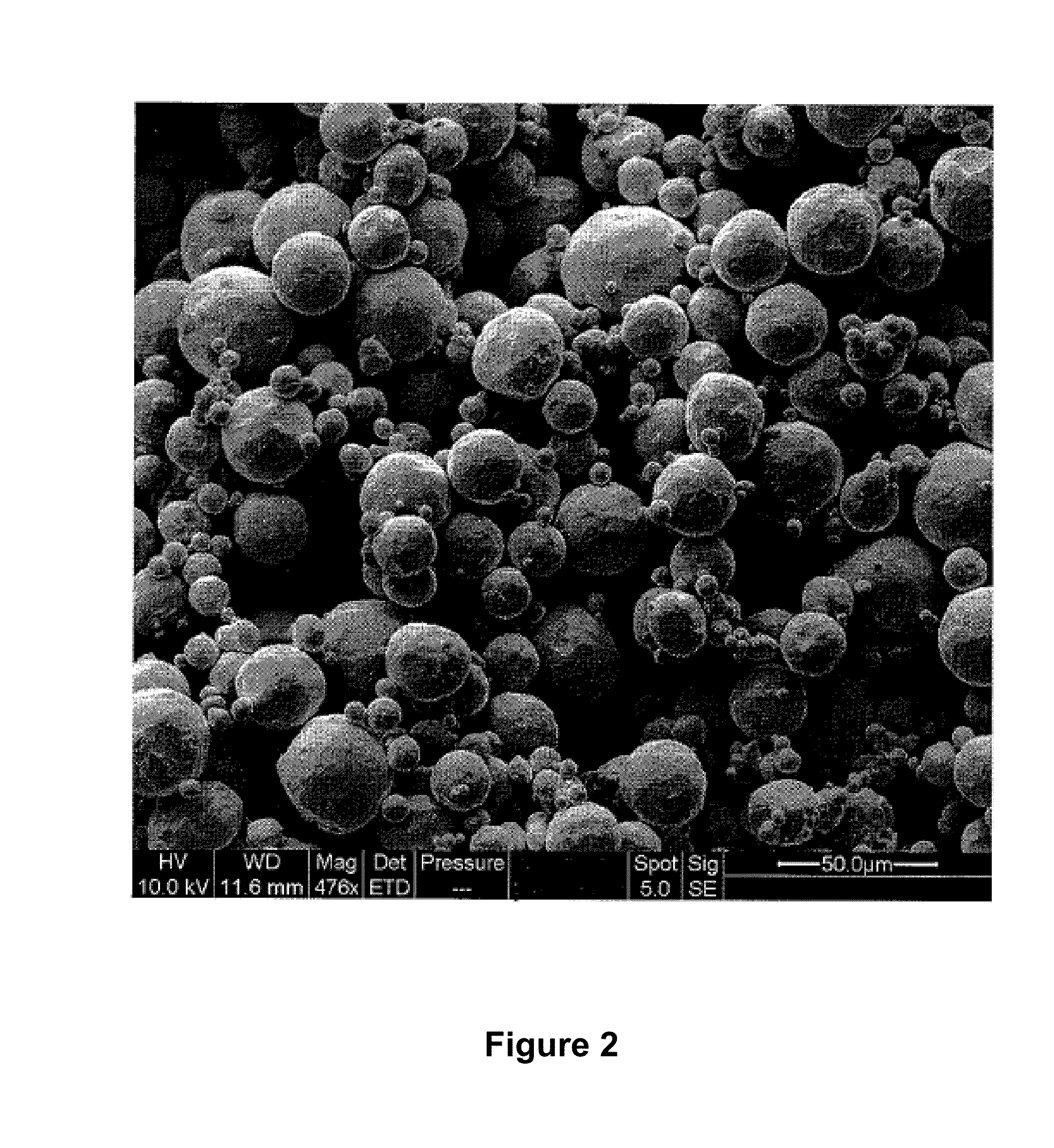High Temperature Solder Materials
a technology of soldering materials and high temperature, applied in the direction of soldering equipment, metal-working equipment, manufacturing tools, etc., can solve the problems of fracturing parts of components, weakened or inconsistent bonding between components, and potential reliability problems
- Summary
- Abstract
- Description
- Claims
- Application Information
AI Technical Summary
Benefits of technology
Problems solved by technology
Method used
Image
Examples
example 1
Forming a AG—In Solder Material
[0087]A solder material was formed using silver (Ag), which has a Tm value of about 962° C., and Indium (In), which has a melting point of about 157° C. A precursor paste material was formed including metal powders of Ag and In combined with a no clean RMA flux material (a commercially available RMA flux material sold under the tradename TAC Flux 007 from Indium Corporation (New York)).
[0088]As noted above, the amount or composition of each metal to be provided in the solder material will be based upon the specific metals selected and also factors such as the desired application temperature (Ta) range over which the solder material is required to remain stable and perform according to desired specifications. An Ag—In equilibrium phase diagram is depicted in FIG. 1 and provides useful information regarding different melting points of an Ag—In alloy based upon different compositions of Ag and In in the alloy. It is preferable that a Ag—In solder material...
example 2
Forming a Solder Joint with Ag—In Solder Material
[0095]A solder joint was formed using the Ag—In solder paste material described above in Example 1 and with a TLPS process utilizing a Tp of 250° C. , a heating rate of about 1° C. / second and a holding time of 60 minutes. The solder joint was formed by applying the solder paste material to a substrate on which a TSOP package with pure Sn plated leads was to be attached. The composition of the solder joint that was formed was determined (using EDX spectrum analysis) to be about 75% by weight Ag and 25% by weight In. Any Sn dissolved from the lead finish was of such small quantity as to be undetectable by the analysis. An SEM image of the solder joint that was formed is depicted in FIG. 5. As can be seen, in particular from the magnified view of the soldered joint, generally spherical Ag particles are present and embedded within a Ag—In metal matrix.
[0096]The resultant Ag—In metal alloy forming the solder joint had a melting point of ab...
example 3
Effect of Particle Size and Holding Time on Homogenization of Ag—In Solder Material during TLPS Process
[0098]Two Ag—In solder paste materials (Paste A and Paste B) were formed in a similar manner as described above in Example 1, with the amount of Ag / In in the metal powder being about 75% Ag and about 25% In of the total metal powder weight and with a no clean RMA flux material being provided to form the paste in an amount of about 10% by total weight of the paste. In the first paste, Paste A, the nominal particle size of both Ag and In particles was limited to no more than about 25 microns (using a (−500 / +635) mesh as determined by a standard screening or sieving process, where 80% of the particles are from about 15 microns to about 25 microns). In the second paste, Paste B, the nominal particle size of both Ag and In particles was limited to no more than about 50 microns (using a (−325 / +500) mesh as determined by a standard screening or sieving process, where 80% of the particles ...
PUM
| Property | Measurement | Unit |
|---|---|---|
| temperature | aaaaa | aaaaa |
| sizes | aaaaa | aaaaa |
| melting point temperature | aaaaa | aaaaa |
Abstract
Description
Claims
Application Information
 Login to View More
Login to View More - R&D
- Intellectual Property
- Life Sciences
- Materials
- Tech Scout
- Unparalleled Data Quality
- Higher Quality Content
- 60% Fewer Hallucinations
Browse by: Latest US Patents, China's latest patents, Technical Efficacy Thesaurus, Application Domain, Technology Topic, Popular Technical Reports.
© 2025 PatSnap. All rights reserved.Legal|Privacy policy|Modern Slavery Act Transparency Statement|Sitemap|About US| Contact US: help@patsnap.com



